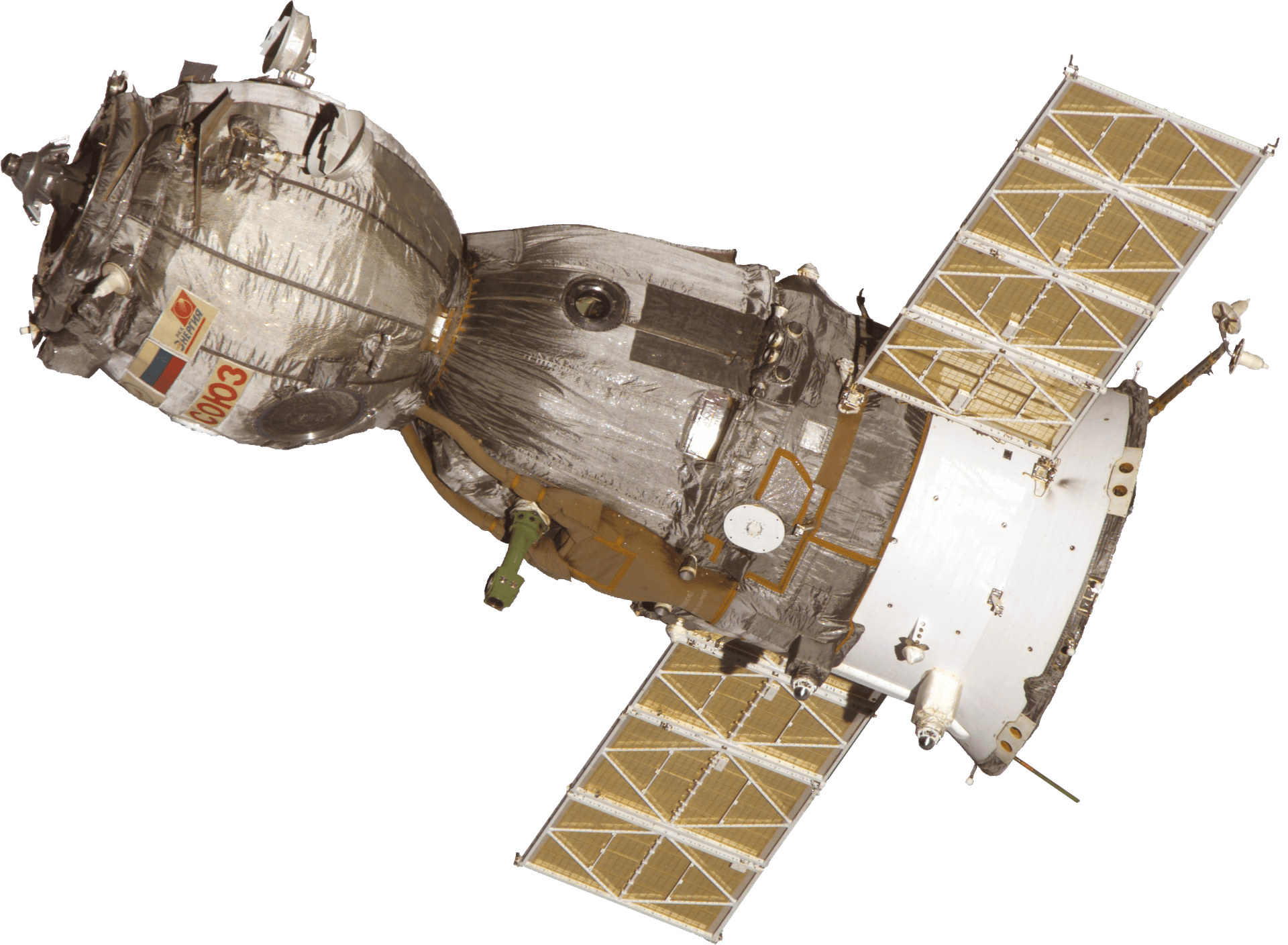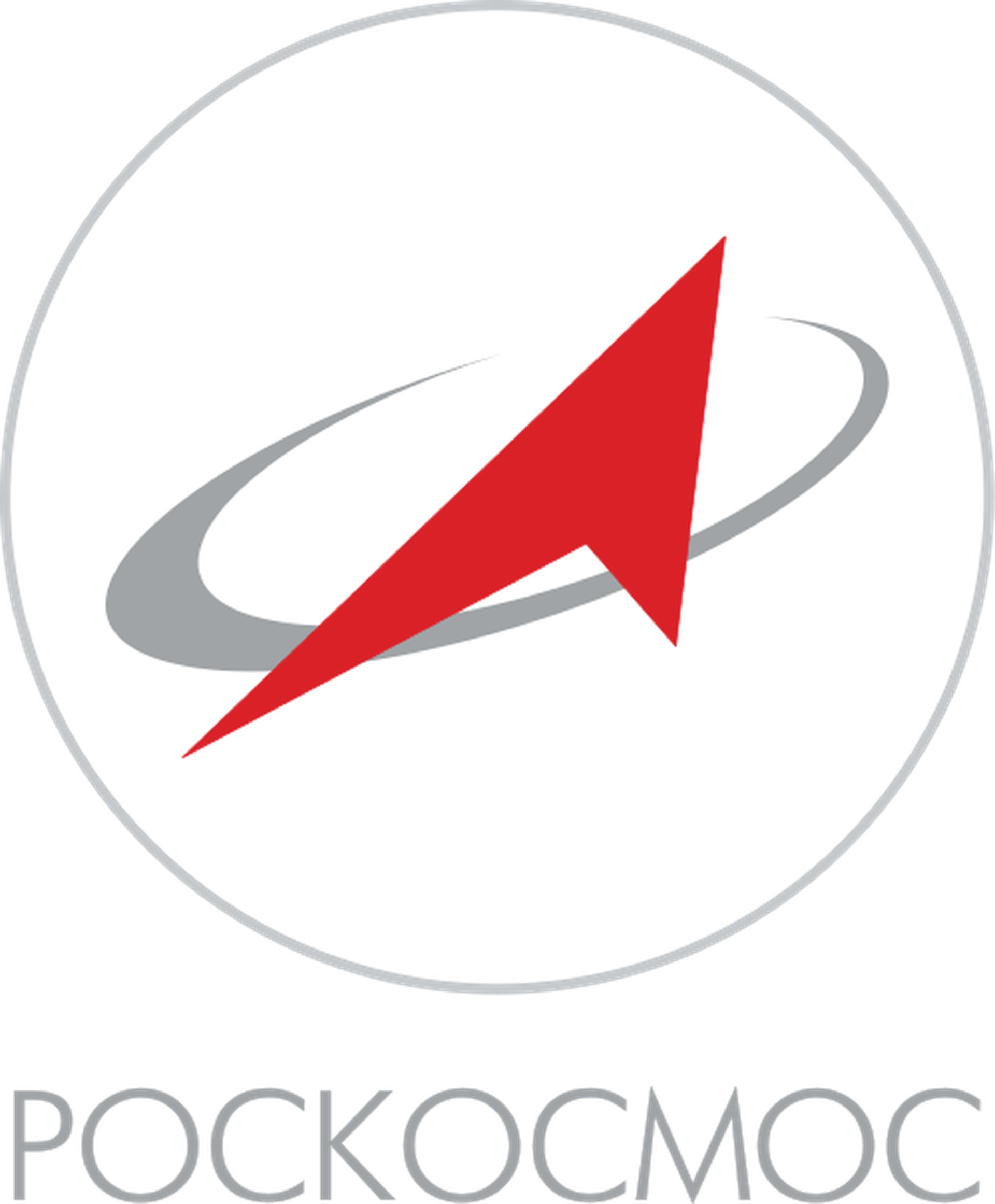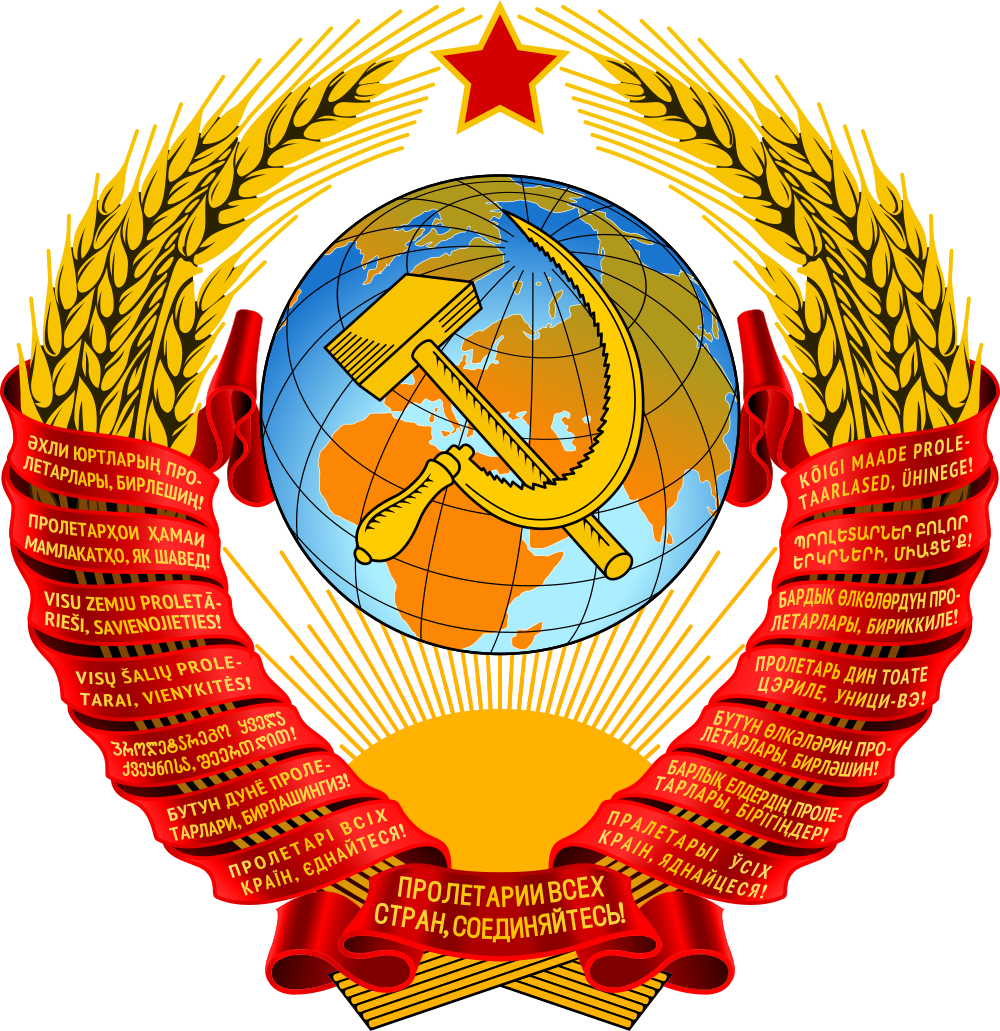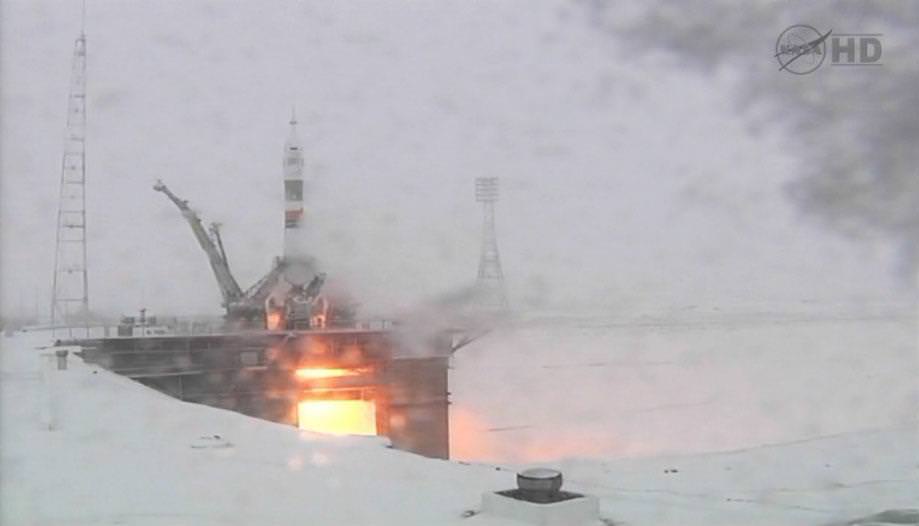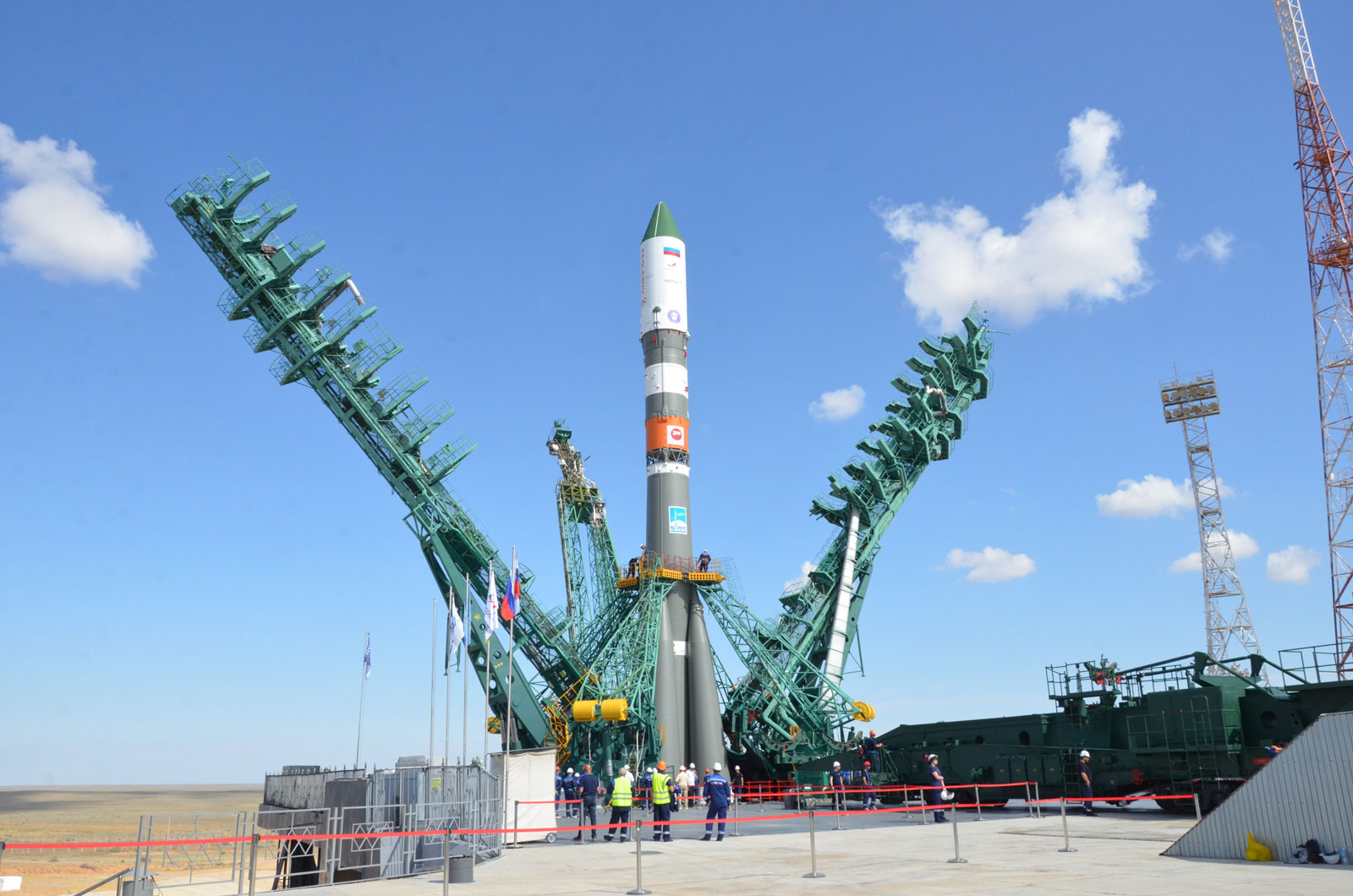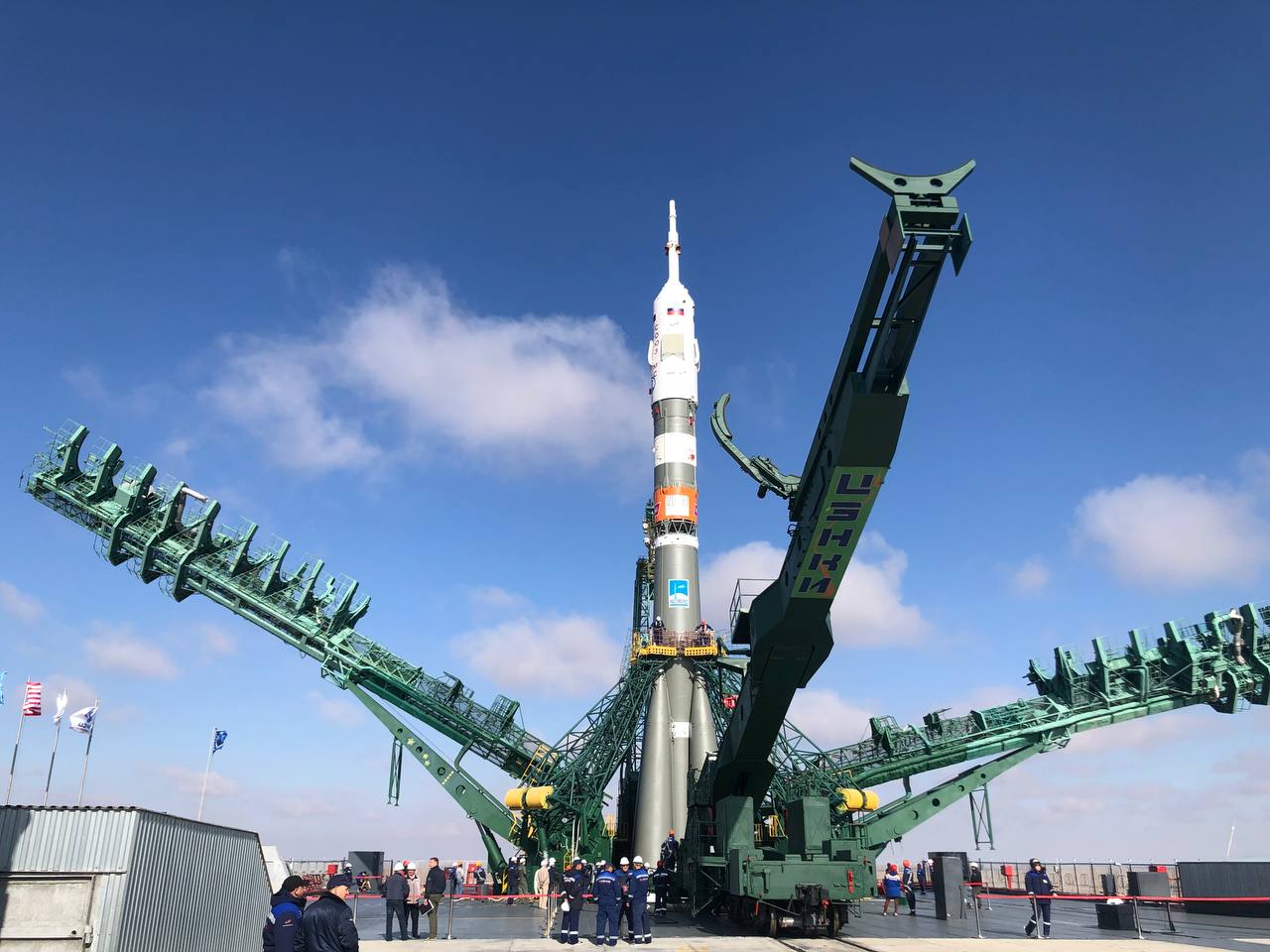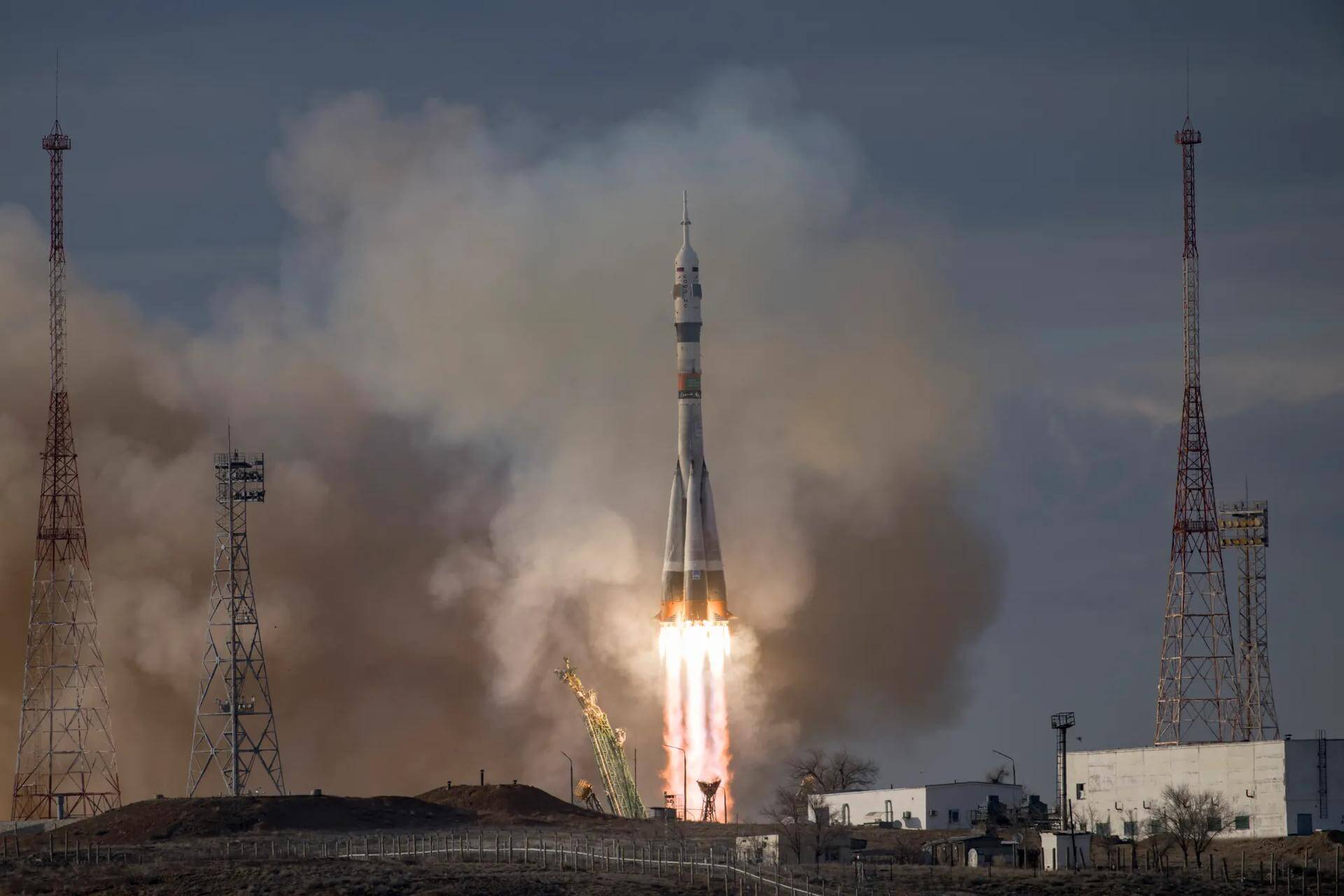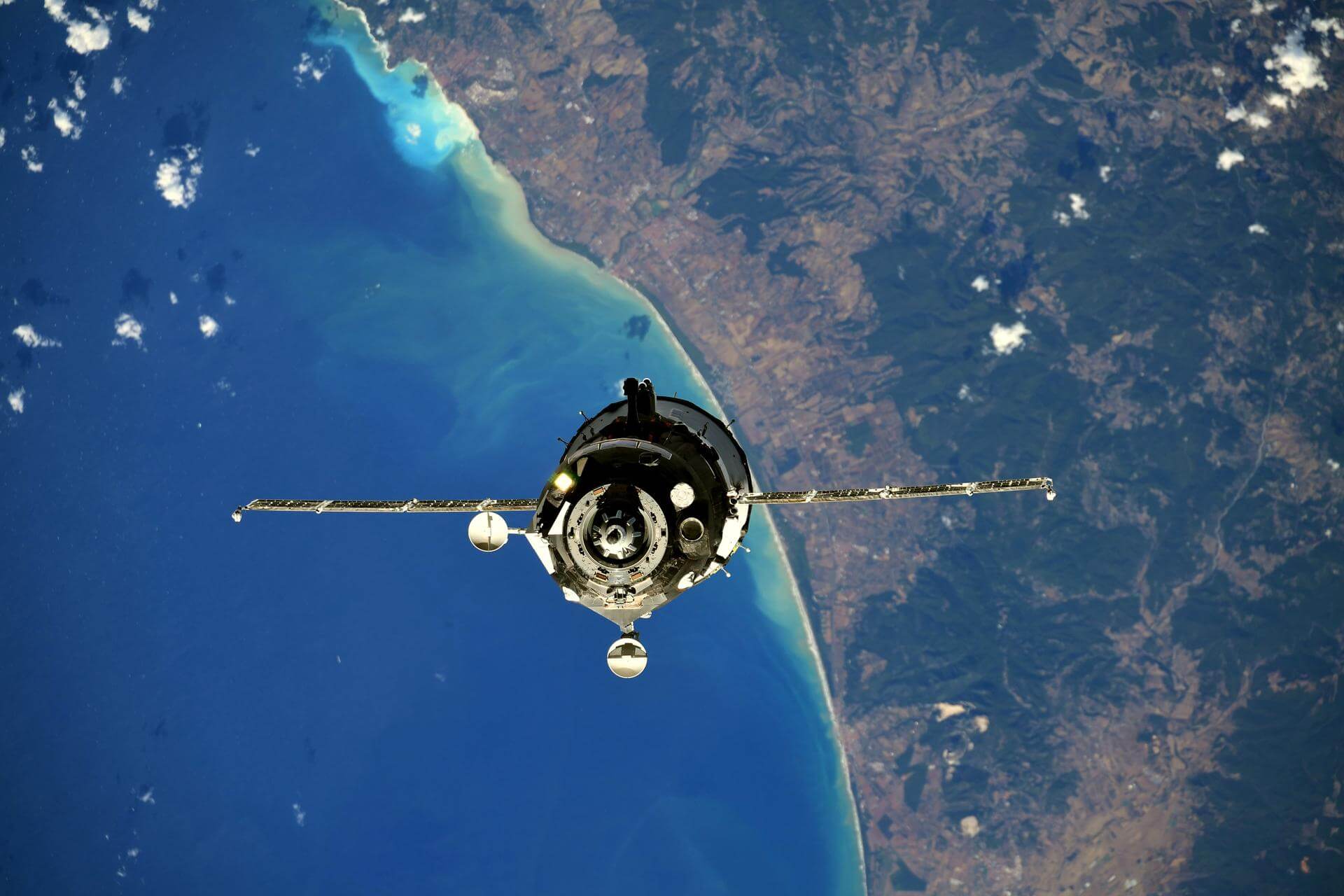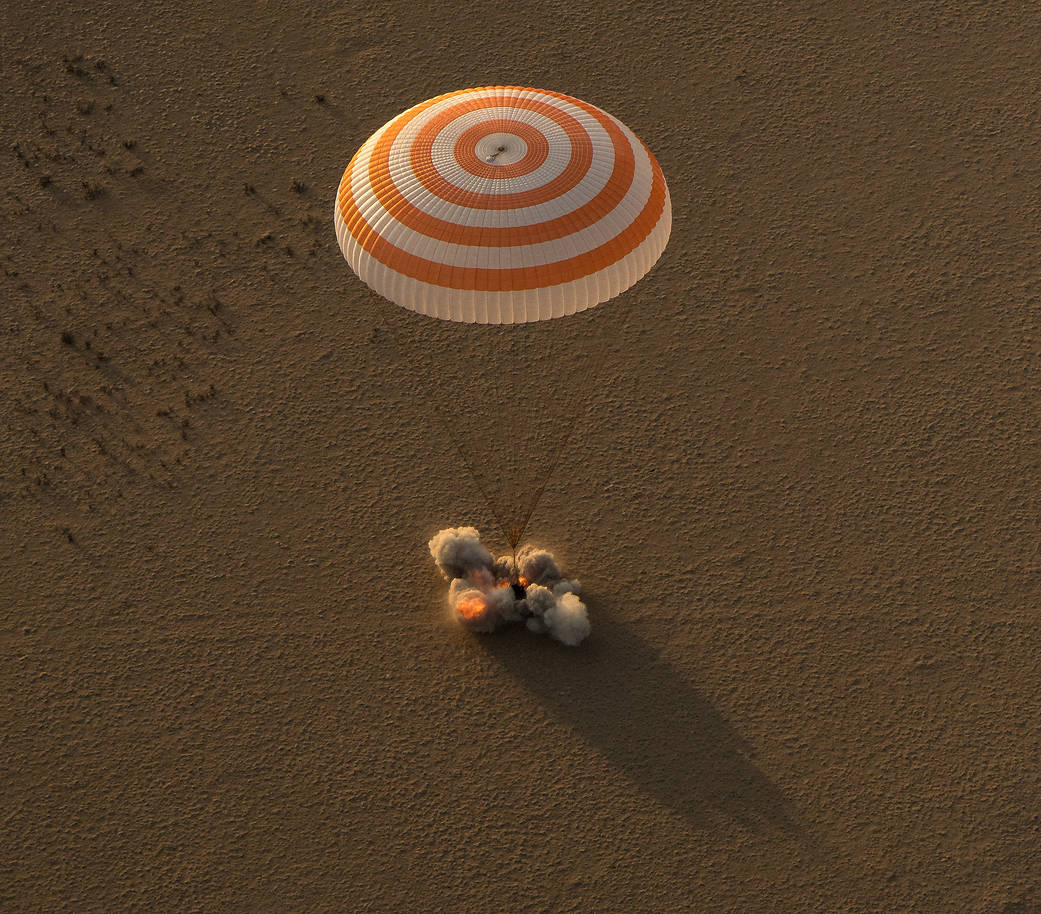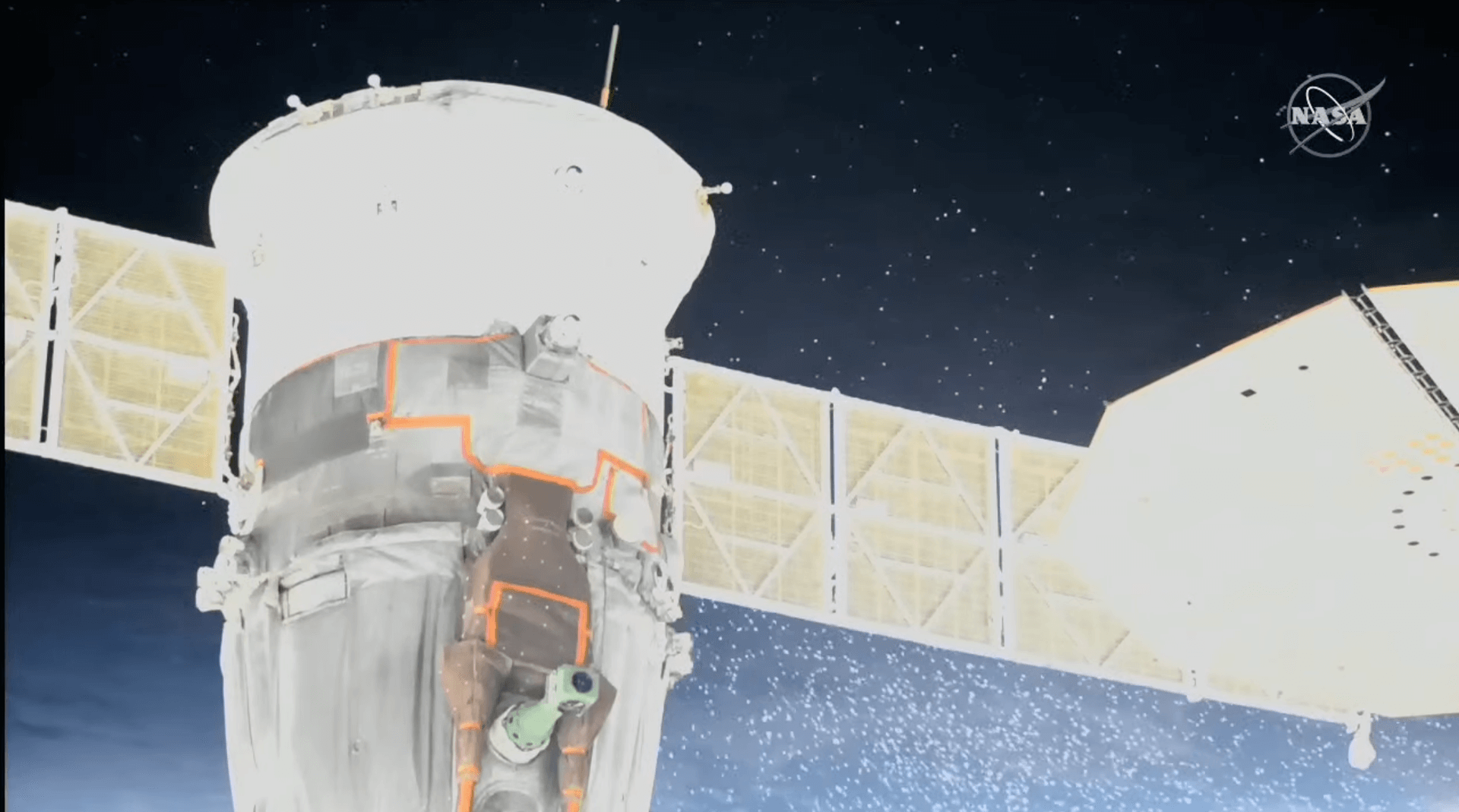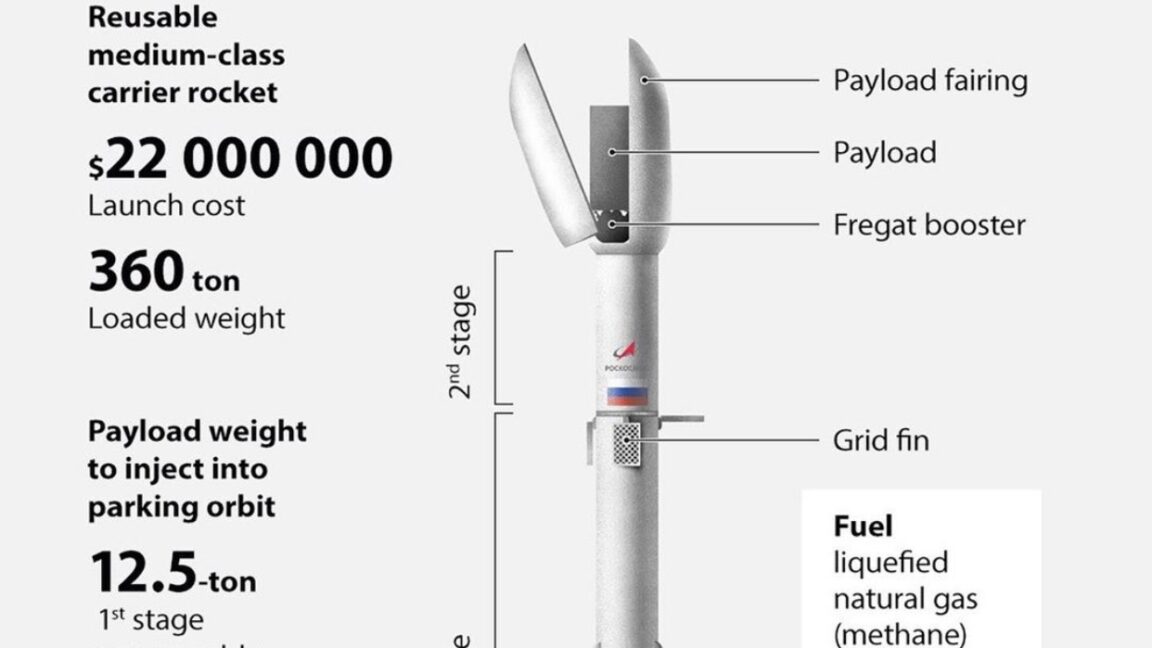Soyuz
The Soyuz programme is a human spaceflight programme initiated by the Soviet Union in the early 1960s. The Soyuz spacecraft was originally part of a Moon landing project intended to put a Soviet cosmonaut on the Moon. It was the third Soviet human spaceflight programme after the Vostok and Voskhod programmes.
Related Agencies
Russian Federal Space Agency (ROSCOSMOS)
The Roscosmos State Corporation for Space Activities, commonly known as Roscosmos, is the governmental body responsible for the space science program of the Russian Federation and general aerospace research. Soyuz has many launch locations the Russian sites are Baikonur, Plesetsk and Vostochny however Ariane also purchases the vehicle and launches it from French Guiana.
Soviet Space Program
The Soviet space program, was the national space program of the Union of Soviet Socialist Republics (USSR) actived from 1930s until disintegration of the Soviet Union in 1991. The Soviet Union's space program was mainly based on the cosmonautic exploration of space and the development of the expandable launch vehicles, which had been split between many design bureaus competing against each other. Over its 60-years of history, the Russian program was responsible for a number of pioneering feats and accomplishments in the human space flight, including the first intercontinental ballistic missile (R-7), first satellite (Sputnik 1), first animal in Earth orbit (the dog Laika on Sputnik 2), first human in space and Earth orbit (cosmonaut Yuri Gagarin on Vostok 1), first woman in space and Earth orbit (cosmonaut Valentina Tereshkova on Vostok 6), first spacewalk (cosmonaut Alexei Leonov on Voskhod 2), first Moon impact (Luna 2), first image of the far side of the Moon (Luna 3) and unmanned lunar soft landing (Luna 9), first space rover (Lunokhod 1), first sample of lunar soil automatically extracted and brought to Earth (Luna 16), and first space station (Salyut 1). Further notable records included the first interplanetary probes: Venera 1 and Mars 1 to fly by Venus and Mars, respectively, Venera 3 and Mars 2 to impact the respective planet surface, and Venera 7 and Mars 3 to make soft landings on these planets.
Related Launches
Soyuz | Kosmos 133
Soviet Space Program
Baikonur Cosmodrome, Republic of Kazakhstan
Date Loading...
Soyuz | Soyuz 7K-OK No.1
Soviet Space Program
Baikonur Cosmodrome, Republic of Kazakhstan
Date Loading...
Soyuz | Kosmos 140
Soviet Space Program
Baikonur Cosmodrome, Republic of Kazakhstan
Date Loading...
Proton / UR-500 K/D | Kosmos 146
Soviet Space Program
Baikonur Cosmodrome, Republic of Kazakhstan
Date Loading...
Proton / UR-500 K/D | Kosmos 154
Soviet Space Program
Baikonur Cosmodrome, Republic of Kazakhstan
Date Loading...
Soyuz | Soyuz 1
Soviet Space Program
Baikonur Cosmodrome, Republic of Kazakhstan
Date Loading...
Proton / UR-500 K/D | Soyuz 7K-L1 No.4L
Soviet Space Program
Baikonur Cosmodrome, Republic of Kazakhstan
Date Loading...
Soyuz | Kosmos 186
Soviet Space Program
Baikonur Cosmodrome, Republic of Kazakhstan
Date Loading...
Soyuz | Kosmos 188
Soviet Space Program
Baikonur Cosmodrome, Republic of Kazakhstan
Date Loading...
Proton / UR-500 K/D | Soyuz 7K-L1 No.5L
Soviet Space Program
Baikonur Cosmodrome, Republic of Kazakhstan
Date Loading...
Proton / UR-500 K/D | Zond 4
Soviet Space Program
Baikonur Cosmodrome, Republic of Kazakhstan
Date Loading...
Soyuz | Kosmos 212
Soviet Space Program
Baikonur Cosmodrome, Republic of Kazakhstan
Date Loading...
Soyuz | Kosmos 213
Soviet Space Program
Baikonur Cosmodrome, Republic of Kazakhstan
Date Loading...
Proton / UR-500 K/D | Soyuz 7K-L1 No.7L
Soviet Space Program
Baikonur Cosmodrome, Republic of Kazakhstan
Date Loading...
Proton / UR-500 K/D | Soyuz 7K-L1 No.8L
Soviet Space Program
Baikonur Cosmodrome, Republic of Kazakhstan
Date Loading...
Soyuz | Kosmos 238
Soviet Space Program
Baikonur Cosmodrome, Republic of Kazakhstan
Date Loading...
Proton / UR-500 K/D | Zond 5
Soviet Space Program
Baikonur Cosmodrome, Republic of Kazakhstan
Date Loading...
Soyuz | Soyuz 2
Soviet Space Program
Baikonur Cosmodrome, Republic of Kazakhstan
Date Loading...
Soyuz | Soyuz 3
Soviet Space Program
Baikonur Cosmodrome, Republic of Kazakhstan
Date Loading...
Proton / UR-500 K/D | Zond 6
Soviet Space Program
Baikonur Cosmodrome, Republic of Kazakhstan
Date Loading...
Soyuz | Soyuz 4
Soviet Space Program
Baikonur Cosmodrome, Republic of Kazakhstan
Date Loading...
Soyuz | Soyuz 5
Soviet Space Program
Baikonur Cosmodrome, Republic of Kazakhstan
Date Loading...
Proton / UR-500 K/D | Soyuz 7K-L1 No.13L
Soviet Space Program
Baikonur Cosmodrome, Republic of Kazakhstan
Date Loading...
N1 | Zond-M 1
Soviet Space Program
Baikonur Cosmodrome, Republic of Kazakhstan
Date Loading...
N1 | Zond-M 2
Soviet Space Program
Baikonur Cosmodrome, Republic of Kazakhstan
Date Loading...
Proton / UR-500 K/D | Zond 7
Soviet Space Program
Baikonur Cosmodrome, Republic of Kazakhstan
Date Loading...
Soyuz | Soyuz 6
Soviet Space Program
Baikonur Cosmodrome, Republic of Kazakhstan
Date Loading...
Soyuz | Soyuz 7
Soviet Space Program
Baikonur Cosmodrome, Republic of Kazakhstan
Date Loading...
Soyuz | Soyuz 8
Soviet Space Program
Baikonur Cosmodrome, Republic of Kazakhstan
Date Loading...
Proton / UR-500 K/D | Soyuz 7K-L1E No.1
Soviet Space Program
Baikonur Cosmodrome, Republic of Kazakhstan
Date Loading...
Soyuz | Soyuz 9
Soviet Space Program
Baikonur Cosmodrome, Republic of Kazakhstan
Date Loading...
Proton / UR-500 K/D | Zond 8
Soviet Space Program
Baikonur Cosmodrome, Republic of Kazakhstan
Date Loading...
Proton | L1E 2K
Soviet Space Program
Baikonur Cosmodrome, Republic of Kazakhstan
Date Loading...
Soyuz | Soyuz 10
Soviet Space Program
Baikonur Cosmodrome, Republic of Kazakhstan
Date Loading...
Soyuz | Soyuz 11
Soviet Space Program
Baikonur Cosmodrome, Republic of Kazakhstan
Date Loading...
N1 | Soyuz 7K-LOK No.1
Soviet Space Program
Baikonur Cosmodrome, Republic of Kazakhstan
Date Loading...
Soyuz | Kosmos 496
Soviet Space Program
Baikonur Cosmodrome, Republic of Kazakhstan
Date Loading...
N1 | Soyuz 7K-LOK No.2
Soviet Space Program
Baikonur Cosmodrome, Republic of Kazakhstan
Date Loading...
Soyuz | Kosmos 573
Soviet Space Program
Baikonur Cosmodrome, Republic of Kazakhstan
Date Loading...
Soyuz | Soyuz 12
Soviet Space Program
Baikonur Cosmodrome, Republic of Kazakhstan
Date Loading...
Soyuz | Kosmos 613
Soviet Space Program
Baikonur Cosmodrome, Republic of Kazakhstan
Date Loading...
Soyuz | Soyuz 13
Soviet Space Program
Baikonur Cosmodrome, Republic of Kazakhstan
Date Loading...
Soyuz U | Kosmos 638
Soviet Space Program
Baikonur Cosmodrome, Republic of Kazakhstan
Date Loading...
Soyuz | Kosmos 656
Soviet Space Program
Baikonur Cosmodrome, Republic of Kazakhstan
Date Loading...
Soyuz | Soyuz 14
Soviet Space Program
Baikonur Cosmodrome, Republic of Kazakhstan
Date Loading...
Soyuz U | Kosmos 670
Soviet Space Program
Baikonur Cosmodrome, Republic of Kazakhstan
Date Loading...
Soyuz U | Kosmos 672
Soviet Space Program
Baikonur Cosmodrome, Republic of Kazakhstan
Date Loading...
Soyuz | Soyuz 15
Soviet Space Program
Baikonur Cosmodrome, Republic of Kazakhstan
Date Loading...
Soyuz-U | Soyuz 16
Soviet Space Program
Baikonur Cosmodrome, Republic of Kazakhstan
Date Loading...
Soyuz | Soyuz 17
Soviet Space Program
Baikonur Cosmodrome, Republic of Kazakhstan
Date Loading...
Soyuz | Soyuz 7K-T No.39 (Soyuz 18a / Soyuz 18-1)
Soviet Space Program
Baikonur Cosmodrome, Republic of Kazakhstan
Date Loading...
Soyuz | Soyuz 18
Soviet Space Program
Baikonur Cosmodrome, Republic of Kazakhstan
Date Loading...
Soyuz-U | Soyuz 19
Soviet Space Program
Baikonur Cosmodrome, Republic of Kazakhstan
Date Loading...
Soyuz U | Kosmos 772
Soviet Space Program
Baikonur Cosmodrome, Republic of Kazakhstan
Date Loading...
Soyuz U | Soyuz 20
Soviet Space Program
Baikonur Cosmodrome, Republic of Kazakhstan
Date Loading...
Soyuz | Soyuz 21
Soviet Space Program
Baikonur Cosmodrome, Republic of Kazakhstan
Date Loading...
Soyuz-U | Soyuz 22
Soviet Space Program
Baikonur Cosmodrome, Republic of Kazakhstan
Date Loading...
Soyuz | Soyuz 23
Soviet Space Program
Baikonur Cosmodrome, Republic of Kazakhstan
Date Loading...
Soyuz U | Kosmos 869
Soviet Space Program
Baikonur Cosmodrome, Republic of Kazakhstan
Date Loading...
Soyuz-U | Soyuz 24
Soviet Space Program
Baikonur Cosmodrome, Republic of Kazakhstan
Date Loading...
Soyuz U | Soyuz 25
Soviet Space Program
Baikonur Cosmodrome, Republic of Kazakhstan
Date Loading...
Soyuz-U | Soyuz 26
Soviet Space Program
Baikonur Cosmodrome, Republic of Kazakhstan
Date Loading...
Soyuz-U | Soyuz 27
Soviet Space Program
Baikonur Cosmodrome, Republic of Kazakhstan
Date Loading...
Soyuz-U | Soyuz 28
Soviet Space Program
Baikonur Cosmodrome, Republic of Kazakhstan
Date Loading...
Soyuz U | Kosmos 1001
Soviet Space Program
Baikonur Cosmodrome, Republic of Kazakhstan
Date Loading...
Soyuz-U | Soyuz 29
Soviet Space Program
Baikonur Cosmodrome, Republic of Kazakhstan
Date Loading...
Soyuz-U | Soyuz 30
Soviet Space Program
Baikonur Cosmodrome, Republic of Kazakhstan
Date Loading...
Soyuz-U | Soyuz 31
Soviet Space Program
Baikonur Cosmodrome, Republic of Kazakhstan
Date Loading...
Soyuz U | Kosmos 1074
Soviet Space Program
Baikonur Cosmodrome, Republic of Kazakhstan
Date Loading...
Soyuz-U | Soyuz 32
Soviet Space Program
Baikonur Cosmodrome, Republic of Kazakhstan
Date Loading...
Soyuz-U | Soyuz 33
Soviet Space Program
Baikonur Cosmodrome, Republic of Kazakhstan
Date Loading...
Soyuz U | Soyuz-34
Soviet Space Program
Baikonur Cosmodrome, Republic of Kazakhstan
Date Loading...
Soyuz U | Soyuz T-1
Soviet Space Program
Baikonur Cosmodrome, Republic of Kazakhstan
Date Loading...
Soyuz-U | Soyuz 35
Soviet Space Program
Baikonur Cosmodrome, Republic of Kazakhstan
Date Loading...
Soyuz-U | Soyuz 36
Soviet Space Program
Baikonur Cosmodrome, Republic of Kazakhstan
Date Loading...
Soyuz-U | Soyuz T-2
Soviet Space Program
Baikonur Cosmodrome, Republic of Kazakhstan
Date Loading...
Soyuz-U | Soyuz 37
Soviet Space Program
Baikonur Cosmodrome, Republic of Kazakhstan
Date Loading...
Soyuz-U | Soyuz 38
Soviet Space Program
Baikonur Cosmodrome, Republic of Kazakhstan
Date Loading...
Soyuz-U | Soyuz T-3
Soviet Space Program
Baikonur Cosmodrome, Republic of Kazakhstan
Date Loading...
Soyuz-U | Soyuz T-4
Soviet Space Program
Baikonur Cosmodrome, Republic of Kazakhstan
Date Loading...
Soyuz-U | Soyuz 39
Soviet Space Program
Baikonur Cosmodrome, Republic of Kazakhstan
Date Loading...
Soyuz-U | Soyuz 40
Soviet Space Program
Baikonur Cosmodrome, Republic of Kazakhstan
Date Loading...
Soyuz-U | Soyuz T-5
Soviet Space Program
Baikonur Cosmodrome, Republic of Kazakhstan
Date Loading...
Soyuz-U | Soyuz T-6
Soviet Space Program
Baikonur Cosmodrome, Republic of Kazakhstan
Date Loading...
Soyuz-U | Soyuz T-7
Soviet Space Program
Baikonur Cosmodrome, Republic of Kazakhstan
Date Loading...
Soyuz-U | Soyuz T-8
Soviet Space Program
Baikonur Cosmodrome, Republic of Kazakhstan
Date Loading...
Soyuz-U | Soyuz T-9
Soviet Space Program
Baikonur Cosmodrome, Republic of Kazakhstan
Date Loading...
Soyuz-U | Soyuz 7K-ST No.16L (Soyuz T-10a / T-10-1)
Soviet Space Program
Baikonur Cosmodrome, Republic of Kazakhstan
Date Loading...
Soyuz-U | Soyuz T-10
Soviet Space Program
Baikonur Cosmodrome, Republic of Kazakhstan
Date Loading...
Soyuz-U | Soyuz T-11
Soviet Space Program
Baikonur Cosmodrome, Republic of Kazakhstan
Date Loading...
Soyuz-U2 | Soyuz T-12
Soviet Space Program
Baikonur Cosmodrome, Republic of Kazakhstan
Date Loading...
Soyuz-U2 | Soyuz T-13
Soviet Space Program
Baikonur Cosmodrome, Republic of Kazakhstan
Date Loading...
Soyuz-U2 | Soyuz T-14
Soviet Space Program
Baikonur Cosmodrome, Republic of Kazakhstan
Date Loading...
Soyuz-U2 | Soyuz T-15
Soviet Space Program
Baikonur Cosmodrome, Republic of Kazakhstan
Date Loading...
Soyuz-U2 | Soyuz TM-1
Soviet Space Program
Baikonur Cosmodrome, Republic of Kazakhstan
Date Loading...
Soyuz-U2 | Soyuz TM-2
Soviet Space Program
Baikonur Cosmodrome, Republic of Kazakhstan
Date Loading...
Soyuz-U2 | Soyuz TM-3
Soviet Space Program
Baikonur Cosmodrome, Republic of Kazakhstan
Date Loading...
Soyuz-U2 | Soyuz TM-4
Soviet Space Program
Baikonur Cosmodrome, Republic of Kazakhstan
Date Loading...
Soyuz-U2 | Soyuz TM-5
Soviet Space Program
Baikonur Cosmodrome, Republic of Kazakhstan
Date Loading...
Soyuz-U2 | Soyuz TM-6
Soviet Space Program
Baikonur Cosmodrome, Republic of Kazakhstan
Date Loading...
Soyuz-U2 | Soyuz TM-7
Soviet Space Program
Baikonur Cosmodrome, Republic of Kazakhstan
Date Loading...
Soyuz-U2 | Soyuz TM-8
Soviet Space Program
Baikonur Cosmodrome, Republic of Kazakhstan
Date Loading...
Soyuz-U2 | Soyuz TM-9
Soviet Space Program
Baikonur Cosmodrome, Republic of Kazakhstan
Date Loading...
Soyuz-U2 | Soyuz TM-10
Soviet Space Program
Baikonur Cosmodrome, Republic of Kazakhstan
Date Loading...
Soyuz-U2 | Soyuz TM-11
Soviet Space Program
Baikonur Cosmodrome, Republic of Kazakhstan
Date Loading...
Soyuz-U2 | Soyuz TM-12
Soviet Space Program
Baikonur Cosmodrome, Republic of Kazakhstan
Date Loading...
Soyuz-U2 | Soyuz TM-13
Soviet Space Program
Baikonur Cosmodrome, Republic of Kazakhstan
Date Loading...
Soyuz-U2 | Soyuz TM-14
Russian Federal Space Agency (ROSCOSMOS)
Baikonur Cosmodrome, Republic of Kazakhstan
Date Loading...
Soyuz-U2 | Soyuz TM-15
Russian Federal Space Agency (ROSCOSMOS)
Baikonur Cosmodrome, Republic of Kazakhstan
Date Loading...
Soyuz-U2 | Soyuz TM-16
Russian Federal Space Agency (ROSCOSMOS)
Baikonur Cosmodrome, Republic of Kazakhstan
Date Loading...
Soyuz-U2 | Soyuz TM-17
Russian Federal Space Agency (ROSCOSMOS)
Baikonur Cosmodrome, Republic of Kazakhstan
Date Loading...
Soyuz-U2 | Soyuz TM-18
Russian Federal Space Agency (ROSCOSMOS)
Baikonur Cosmodrome, Republic of Kazakhstan
Date Loading...
Soyuz-U2 | Soyuz TM-19
Russian Federal Space Agency (ROSCOSMOS)
Baikonur Cosmodrome, Republic of Kazakhstan
Date Loading...
Soyuz-U2 | Soyuz TM-20
Russian Federal Space Agency (ROSCOSMOS)
Baikonur Cosmodrome, Republic of Kazakhstan
Date Loading...
Soyuz-U2 | Soyuz TM-21
Russian Federal Space Agency (ROSCOSMOS)
Baikonur Cosmodrome, Republic of Kazakhstan
Date Loading...
Soyuz-U2 | Soyuz TM-22
Russian Federal Space Agency (ROSCOSMOS)
Baikonur Cosmodrome, Republic of Kazakhstan
Date Loading...
Soyuz-U | Soyuz TM-23
Russian Federal Space Agency (ROSCOSMOS)
Baikonur Cosmodrome, Republic of Kazakhstan
Date Loading...
Soyuz-U | Soyuz TM-24
Russian Federal Space Agency (ROSCOSMOS)
Baikonur Cosmodrome, Republic of Kazakhstan
Date Loading...
Soyuz-U | Soyuz TM-25
Russian Federal Space Agency (ROSCOSMOS)
Baikonur Cosmodrome, Republic of Kazakhstan
Date Loading...
Soyuz-U | Soyuz TM-26
Russian Federal Space Agency (ROSCOSMOS)
Baikonur Cosmodrome, Republic of Kazakhstan
Date Loading...
Soyuz U | Soyuz TM-27
Russian Federal Space Agency (ROSCOSMOS)
Baikonur Cosmodrome, Republic of Kazakhstan
Date Loading...
Soyuz-U | Soyuz TM-28
Russian Federal Space Agency (ROSCOSMOS)
Baikonur Cosmodrome, Republic of Kazakhstan
Date Loading...
Soyuz-U | Soyuz TM-29
Russian Federal Space Agency (ROSCOSMOS)
Baikonur Cosmodrome, Republic of Kazakhstan
Date Loading...
Soyuz-U | Soyuz TM-30
Russian Federal Space Agency (ROSCOSMOS)
Baikonur Cosmodrome, Republic of Kazakhstan
Date Loading...
Soyuz-U | Soyuz TM-31
Russian Federal Space Agency (ROSCOSMOS)
Baikonur Cosmodrome, Republic of Kazakhstan
Date Loading...
Soyuz-U | Soyuz TM-32
Russian Federal Space Agency (ROSCOSMOS)
Baikonur Cosmodrome, Republic of Kazakhstan
Date Loading...
Soyuz U | Soyuz TM-33
Russian Federal Space Agency (ROSCOSMOS)
Baikonur Cosmodrome, Republic of Kazakhstan
Date Loading...
Soyuz-U | Soyuz TM-34
Russian Federal Space Agency (ROSCOSMOS)
Baikonur Cosmodrome, Republic of Kazakhstan
Date Loading...
Soyuz-FG | Soyuz TMA-1
Russian Federal Space Agency (ROSCOSMOS)
Baikonur Cosmodrome, Republic of Kazakhstan
Date Loading...
Soyuz-FG | Soyuz TMA-2
Russian Federal Space Agency (ROSCOSMOS)
Baikonur Cosmodrome, Republic of Kazakhstan
Date Loading...
Soyuz-FG | Soyuz TMA-3
Russian Federal Space Agency (ROSCOSMOS)
Baikonur Cosmodrome, Republic of Kazakhstan
Date Loading...
Soyuz-FG | Soyuz TMA-4
Russian Federal Space Agency (ROSCOSMOS)
Baikonur Cosmodrome, Republic of Kazakhstan
Date Loading...
Soyuz-FG | Soyuz TMA-5
Russian Federal Space Agency (ROSCOSMOS)
Baikonur Cosmodrome, Republic of Kazakhstan
Date Loading...
Soyuz-FG | Soyuz TMA-6
Russian Federal Space Agency (ROSCOSMOS)
Baikonur Cosmodrome, Republic of Kazakhstan
Date Loading...
Soyuz-FG | Soyuz TMA-7
Russian Federal Space Agency (ROSCOSMOS)
Baikonur Cosmodrome, Republic of Kazakhstan
Date Loading...
Soyuz-FG | Soyuz TMA-8
Russian Federal Space Agency (ROSCOSMOS)
Baikonur Cosmodrome, Republic of Kazakhstan
Date Loading...
Soyuz-FG | Soyuz TMA-9
Russian Federal Space Agency (ROSCOSMOS)
Baikonur Cosmodrome, Republic of Kazakhstan
Date Loading...
Soyuz-FG | Soyuz TMA-10
Russian Federal Space Agency (ROSCOSMOS)
Baikonur Cosmodrome, Republic of Kazakhstan
Date Loading...
Soyuz-FG | Soyuz TMA-11
Russian Federal Space Agency (ROSCOSMOS)
Baikonur Cosmodrome, Republic of Kazakhstan
Date Loading...
Soyuz-FG | Soyuz TMA-12
Russian Federal Space Agency (ROSCOSMOS)
Baikonur Cosmodrome, Republic of Kazakhstan
Date Loading...
Soyuz-FG | Soyuz TMA-13
Russian Federal Space Agency (ROSCOSMOS)
Baikonur Cosmodrome, Republic of Kazakhstan
Date Loading...
Soyuz-FG | Soyuz TMA-14
Russian Federal Space Agency (ROSCOSMOS)
Baikonur Cosmodrome, Republic of Kazakhstan
Date Loading...
Soyuz-FG | Soyuz TMA-15
Russian Federal Space Agency (ROSCOSMOS)
Baikonur Cosmodrome, Republic of Kazakhstan
Date Loading...
Soyuz-FG | Soyuz TMA-16
Russian Federal Space Agency (ROSCOSMOS)
Baikonur Cosmodrome, Republic of Kazakhstan
Date Loading...
Soyuz-FG | Soyuz TMA-17
Russian Federal Space Agency (ROSCOSMOS)
Baikonur Cosmodrome, Republic of Kazakhstan
Date Loading...
Soyuz FG | Soyuz TMA-18
Russian Federal Space Agency (ROSCOSMOS)
Baikonur Cosmodrome, Republic of Kazakhstan
Date Loading...
Soyuz FG | Soyuz TMA-19
Russian Federal Space Agency (ROSCOSMOS)
Baikonur Cosmodrome, Republic of Kazakhstan
Date Loading...
Soyuz-FG | Soyuz TMA-01M
Russian Federal Space Agency (ROSCOSMOS)
Baikonur Cosmodrome, Republic of Kazakhstan
Date Loading...
Soyuz FG | Soyuz TMA-20
Russian Federal Space Agency (ROSCOSMOS)
Baikonur Cosmodrome, Republic of Kazakhstan
Date Loading...
Soyuz FG | Soyuz TMA-21
Russian Federal Space Agency (ROSCOSMOS)
Baikonur Cosmodrome, Republic of Kazakhstan
Date Loading...
Soyuz FG | Soyuz TMA-02M
Russian Federal Space Agency (ROSCOSMOS)
Baikonur Cosmodrome, Republic of Kazakhstan
Date Loading...
Soyuz-FG | Soyuz TMA-22
Russian Federal Space Agency (ROSCOSMOS)
Baikonur Cosmodrome, Republic of Kazakhstan
Date Loading...
Soyuz FG | Soyuz TMA-03M
Russian Federal Space Agency (ROSCOSMOS)
Baikonur Cosmodrome, Republic of Kazakhstan
Date Loading...
Soyuz FG | Soyuz TMA-04M
Russian Federal Space Agency (ROSCOSMOS)
Baikonur Cosmodrome, Republic of Kazakhstan
Date Loading...
Soyuz FG | Soyuz TMA-05M
Russian Federal Space Agency (ROSCOSMOS)
Baikonur Cosmodrome, Republic of Kazakhstan
Date Loading...
Soyuz FG | Soyuz TMA-06M
Russian Federal Space Agency (ROSCOSMOS)
Baikonur Cosmodrome, Republic of Kazakhstan
Date Loading...
Soyuz FG | Soyuz TMA-07M
Russian Federal Space Agency (ROSCOSMOS)
Baikonur Cosmodrome, Republic of Kazakhstan
Date Loading...
Soyuz FG | Soyuz TMA-08M
Russian Federal Space Agency (ROSCOSMOS)
Baikonur Cosmodrome, Republic of Kazakhstan
Date Loading...
Soyuz FG | Soyuz TMA-09M
Russian Federal Space Agency (ROSCOSMOS)
Baikonur Cosmodrome, Republic of Kazakhstan
Date Loading...
Soyuz FG | Soyuz TMA-10M
Russian Federal Space Agency (ROSCOSMOS)
Baikonur Cosmodrome, Republic of Kazakhstan
Date Loading...
Soyuz FG | Soyuz TMA-11M
Russian Federal Space Agency (ROSCOSMOS)
Baikonur Cosmodrome, Republic of Kazakhstan
Date Loading...
Soyuz FG | Soyuz TMA-12M
Russian Federal Space Agency (ROSCOSMOS)
Baikonur Cosmodrome, Republic of Kazakhstan
Date Loading...
Soyuz FG | Soyuz TMA-13M
Russian Federal Space Agency (ROSCOSMOS)
Baikonur Cosmodrome, Republic of Kazakhstan
Date Loading...
Soyuz FG | Soyuz TMA-14M
Russian Federal Space Agency (ROSCOSMOS)
Baikonur Cosmodrome, Republic of Kazakhstan
Date Loading...
Soyuz FG | Soyuz TMA-15M
Russian Federal Space Agency (ROSCOSMOS)
Baikonur Cosmodrome, Republic of Kazakhstan
Date Loading...
Soyuz FG | Soyuz TMA-16M
Russian Federal Space Agency (ROSCOSMOS)
Baikonur Cosmodrome, Republic of Kazakhstan
Date Loading...
Soyuz-FG | Soyuz TMA-17M
Russian Federal Space Agency (ROSCOSMOS)
Baikonur Cosmodrome, Republic of Kazakhstan
Date Loading...
Soyuz FG | Soyuz TMA-18M
Russian Federal Space Agency (ROSCOSMOS)
Baikonur Cosmodrome, Republic of Kazakhstan
Date Loading...
Soyuz FG | Soyuz TMA-19M
Russian Federal Space Agency (ROSCOSMOS)
Baikonur Cosmodrome, Republic of Kazakhstan
Date Loading...
Soyuz FG | Soyuz TMA-20M
Russian Federal Space Agency (ROSCOSMOS)
Baikonur Cosmodrome, Republic of Kazakhstan
Date Loading...
Soyuz-FG | Soyuz MS (MS-01)
Russian Federal Space Agency (ROSCOSMOS)
Baikonur Cosmodrome, Republic of Kazakhstan
Date Loading...
Soyuz-FG | Soyuz MS-02
Russian Federal Space Agency (ROSCOSMOS)
Baikonur Cosmodrome, Republic of Kazakhstan
Date Loading...
Soyuz-FG | Soyuz MS-03
Russian Federal Space Agency (ROSCOSMOS)
Baikonur Cosmodrome, Republic of Kazakhstan
Date Loading...
Soyuz-FG | Soyuz MS-04
Russian Federal Space Agency (ROSCOSMOS)
Baikonur Cosmodrome, Republic of Kazakhstan
Date Loading...
Soyuz-FG | Soyuz MS-05
Russian Federal Space Agency (ROSCOSMOS)
Baikonur Cosmodrome, Republic of Kazakhstan
Date Loading...
Soyuz-FG | Soyuz MS-06
Russian Federal Space Agency (ROSCOSMOS)
Baikonur Cosmodrome, Republic of Kazakhstan
Date Loading...
Soyuz-FG | Soyuz MS-07
Russian Federal Space Agency (ROSCOSMOS)
Baikonur Cosmodrome, Republic of Kazakhstan
Date Loading...
Soyuz-FG | Soyuz MS-08
Russian Federal Space Agency (ROSCOSMOS)
Baikonur Cosmodrome, Republic of Kazakhstan
Date Loading...
Soyuz-FG | Soyuz MS-09
Russian Federal Space Agency (ROSCOSMOS)
Baikonur Cosmodrome, Republic of Kazakhstan
Date Loading...
Soyuz-FG | Soyuz MS-10
Russian Federal Space Agency (ROSCOSMOS)
Baikonur Cosmodrome, Republic of Kazakhstan
Date Loading...
Soyuz-FG | Soyuz MS-11
Russian Federal Space Agency (ROSCOSMOS)
Baikonur Cosmodrome, Republic of Kazakhstan
Date Loading...
Soyuz-FG | Soyuz MS-12
Russian Federal Space Agency (ROSCOSMOS)
Baikonur Cosmodrome, Republic of Kazakhstan
Date Loading...
Soyuz-FG | Soyuz MS-13
Russian Federal Space Agency (ROSCOSMOS)
Baikonur Cosmodrome, Republic of Kazakhstan
Date Loading...
Soyuz 2.1a | Soyuz MS-14 Uncrewed
Russian Federal Space Agency (ROSCOSMOS)
Baikonur Cosmodrome, Republic of Kazakhstan
Date Loading...
Soyuz-FG | Soyuz MS-15
Russian Federal Space Agency (ROSCOSMOS)
Baikonur Cosmodrome, Republic of Kazakhstan
Date Loading...
Soyuz 2.1a | Soyuz MS-16
Russian Federal Space Agency (ROSCOSMOS)
Baikonur Cosmodrome, Republic of Kazakhstan
Date Loading...
Soyuz 2.1a | Soyuz MS-17
Russian Federal Space Agency (ROSCOSMOS)
Baikonur Cosmodrome, Republic of Kazakhstan
Date Loading...
Soyuz 2.1a | Soyuz MS-18
Russian Federal Space Agency (ROSCOSMOS)
Baikonur Cosmodrome, Republic of Kazakhstan
Date Loading...
Soyuz 2.1a | Soyuz MS-19
Russian Federal Space Agency (ROSCOSMOS)
Baikonur Cosmodrome, Republic of Kazakhstan
Date Loading...
Soyuz 2.1a | Soyuz MS-20
Russian Federal Space Agency (ROSCOSMOS)
Baikonur Cosmodrome, Republic of Kazakhstan
Date Loading...
Soyuz 2.1a | Soyuz MS-21
Russian Federal Space Agency (ROSCOSMOS)
Baikonur Cosmodrome, Republic of Kazakhstan
Date Loading...
Soyuz 2.1a | Soyuz MS-22
Russian Federal Space Agency (ROSCOSMOS)
Baikonur Cosmodrome, Republic of Kazakhstan
Date Loading...
Soyuz 2.1a | Soyuz MS-23
Russian Federal Space Agency (ROSCOSMOS)
Baikonur Cosmodrome, Republic of Kazakhstan
Date Loading...
Soyuz 2.1a | Soyuz MS-24
Russian Federal Space Agency (ROSCOSMOS)
Baikonur Cosmodrome, Republic of Kazakhstan
Date Loading...
Soyuz 2.1a | Soyuz MS-25
Russian Federal Space Agency (ROSCOSMOS)
Baikonur Cosmodrome, Republic of Kazakhstan
Date Loading...
Soyuz 2.1a | Soyuz MS-26
Russian Federal Space Agency (ROSCOSMOS)
Baikonur Cosmodrome, Republic of Kazakhstan
Date Loading...
Soyuz 2.1a | Soyuz MS-27
Russian Federal Space Agency (ROSCOSMOS)
Baikonur Cosmodrome, Republic of Kazakhstan
T?
--
Days
:
--
Hours
:
--
Mins
:
--
Secs
Date Loading...
Related Events
Soyuz MS-16 Undocking
T?
The Soyuz MS-16 spacecraft will undock from the International Space Station carrying three Expedition 62 crew members : ROSCOSMOS cosmonauts Anatoli Ivanishin and Ivan Vagner as well as NASA astronaut Chris Cassidy.
Soyuz MS-16 Landing
T?
The Soyuz MS-16 spacecraft carrying ROSCOSMOS cosmonauts Anatoli Ivanishin and Ivan Vagner as well as NASA astronaut Chris Cassidy will land back on Earth near Dzhezkazgan, Kazakhstan.
Soyuz MS-17 Relocation
T?
The Soyuz MS-17 spacecraft will be relocated from the Rassvet module to the Poisk module. Undocking scheduled at 16:43 UTC, redocking scheduled at 17:13 UTC.
Soyuz MS-18 Docking
T?
The Soyuz MS-18 spacecraft will dock to the International Space Station carrying three new Expedition 65 crew members : ROSCOSMOS cosmonauts Oleg Novitsky and Pyotr Dubrov as well as NASA astronaut Mark Vande Hei.
Soyuz MS-17 Undocking
T?
The Soyuz MS-17 spacecraft will undock from the International Space Station carrying Expedition 64 crew members ROSCOSMOS cosmonauts Sergey Ryzhikov and Sergey Kud-Sverchkov as well as NASA astronaut Kathleen Rubins.
Soyuz MS-17 Landing
T?
The Soyuz MS-17 spacecraft carrying ROSCOSMOS cosmonauts Sergey Ryzhikov and Sergey Kud-Sverchkov as well as NASA astronaut Kathleen Rubins will land back on Earth near Dzhezkazgan, Kazakhstan.
Soyuz MS-18 Relocation
T?
The Soyuz MS-18 spacecraft will be relocated from the Rassvet module to the Nauka module.
Soyuz MS-19 Docking
T?
The Soyuz MS-19 spacecraft will dock to the International Space Station carrying ROSCOSMOS cosmonaut Anton Shkaplerov as Expeditions 65/66 crew member as well as film director Klim Shipenko and actress Yulia Peresild.
Soyuz MS-18 Undocking
T?
The Soyuz MS-18 spacecraft will undock from the International Space Station carrying Expedition 65 crew member ROSCOSMOS cosmonaut Oleg Novitskiy as well as film director Klim Shipenko and actress Yulia Peresild.
Soyuz MS-18 Landing
T?
The Soyuz MS-18 spacecraft carrying ROSCOSMOS cosmonaut Oleg Novitskiy as well as film director Klim Shipenko and actress Yulia Peresild will land back on Earth near Dzhezkazgan, Kazakhstan.
Soyuz MS-20 Undocking
T?
The Soyuz MS-20 spacecraft will undock from the International Space Station carrying ROSCOSMOS cosmonaut Alexander Misurkin as well as Japanese entrepreneur Yusaku Maezawa and his cameraman Yozo Hirano.
Soyuz MS-20 Landing
T?
The Soyuz MS-20 spacecraft carrying ROSCOSMOS cosmonaut Alexander Misurkin as well as Japanese entrepreneur Yusaku Maezawa and his cameraman Yozo Hirano will land back on Earth near Dzhezkazgan, Kazakhstan.
Soyuz MS-21 Docking
T?
The Soyuz MS-21 spacecraft will dock to the International Space Station carrying ROSCOSMOS cosmonauts Oleg Artemyev, Denis Matveev and a third crewmate.
Soyuz MS-19 Undocking
T?
The Soyuz MS-19 spacecraft will undock from the International Space Station carrying ROSCOSMOS cosmonauts Anton Shkaplerov and Pyotr Dubrov as well as NASA astronaut Mark Vande Hei.
Soyuz MS-19 Landing
T?
The Soyuz MS-19 spacecraft carrying ROSCOSMOS cosmonauts Anton Shkaplerov and Pyotr Dubrov as well as NASA astronaut Mark Vande Hei will land back on Earth near Dzhezkazgan, Kazakhstan.
Soyuz MS-22 Docking
T?
The Soyuz MS-22 spacecraft will dock to the International Space Station carrying ROSCOSMOS cosmonauts Sergey Prokopyev and Dmitriy Petelin as well as NASA astronaut Francisco Rubio.
Soyuz MS-21 Undocking
T?
The Soyuz MS-21 spacecraft will undock from the International Space Station carrying ROSCOSMOS cosmonauts Oleg Artemyev, Denis Matveev and a third crewmate.
Soyuz MS-21 Landing
T?
The Soyuz MS-21 spacecraft carrying ROSCOSMOS cosmonauts Oleg Artemyev, Denis Matveev and a third crewmate will land back on Earth near Dzhezkazgan, Kazakhstan.
NASA Soyuz MS-22 Leak Investigation Teleconference
T?
NASA will host a media teleconference to discuss the ongoing investigation of an external leak that occurred Dec. 14, from the Roscosmos Soyuz MS-22 spacecraft docked to the Rassvet module of the International Space Station.
Soyuz MS-22 Investigation Teleconference
T?
NASA and Roscosmos will host a media teleconference to discuss results from the investigation of the Roscosmos Soyuz MS-22 external coolant leak and the forward strategy for uninterrupted human operations aboard the International Space Station.
Soyuz MS-23 Docking
T?
The Soyuz MS-23 spacecraft will autonomously dock to the International Space Station to replace the damaged Soyuz MS-22 spacecraft as a ride home for ROSCOSMOS cosmonauts Sergey Prokopyev and Dmitriy Petelin as well as NASA astronaut Francisco Rubio.
Soyuz MS-22 Undocking
T?
The Soyuz MS-22 spacecraft will undock from the International Space Station ahead of reentry and landing in Kazakhstan.
Soyuz MS-22 Landing
T?
The Soyuz MS-22 spacecraft will land back on Earth near Dzhezkazgan, Kazakhstan.
Soyuz MS-23 Relocation
T?
The Soyuz MS-23 spacecraft will be relocated from the Poisk module to the Pirchal module. Undocking scheduled at 8:42 UTC, redocking scheduled at 9:21 UTC.
Soyuz MS-24 Docking
T?
The Soyuz MS-24 spacecraft will autonomously dock to the International Space Station.
Soyuz MS-23 Undocking
T?
The Soyuz MS-23 spacecraft will undock from the International Space Station ahead of reentry and landing in Kazakhstan.
Soyuz MS-23 Landing
T?
The Soyuz MS-23 spacecraft will land back on Earth near Dzhezkazgan, Kazakhstan.
Soyuz MS-25 Docking
T?
The Soyuz MS-25 spacecraft will autonomously dock to the International Space Station.
Soyuz MS-24 Farewell Ceremony & Hatch Closing
T?
NASA will livestream the farewell ceremony and hatch closing of the Soyuz MS-24 crew ahead of its return to Earth.
Soyuz MS-24 Undocking
T?
The Soyuz MS-24 spacecraft will undock from the International Space Station ahead of reentry and landing in Kazakhstan.
Soyuz MS-24 Landing
T?
The Soyuz MS-24 spacecraft will land back on Earth near Dzhezkazgan, Kazakhstan.
Soyuz MS-26 Docking
T?
The Soyuz MS-26 spacecraft will autonomously dock to the International Space Station.
Soyuz MS-25 Farewell Ceremony
T?
NASA will livestream the farewell ceremony and hatch closing of the Soyuz MS-25 crew ahead of its return to Earth.
Soyuz MS-25 Undocking
T?
The Soyuz MS-25 spacecraft will undock from the International Space Station ahead of reentry and landing in Kazakhstan.
Soyuz MS-25 Landing
T?
The Soyuz MS-25 spacecraft will land back on Earth near Dzhezkazgan, Kazakhstan.
